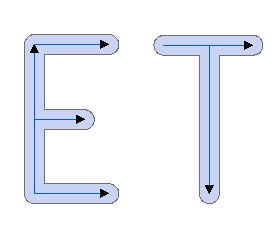
Creates buffer polygons from the polylines of the input dataset. The user can specify the side of the polyline (Left, Right or Both) on which the buffer to be created as well as the shape of the buffer at the end of the polylines - Round or Flat. The buffer distance (in the units of the spatial reference of the input dataset) can be entered as a number (equal for all input polylines)or a numeric field. No negative buffer distance is accepted.
Round buffer both sides (with dissolve option)

Flat buffer both sides
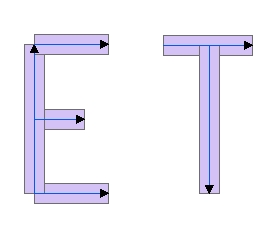
Flat buffer on the left side
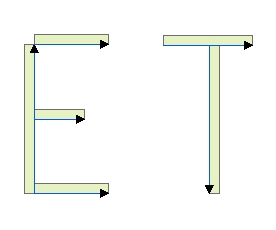
Round buffer on the right side
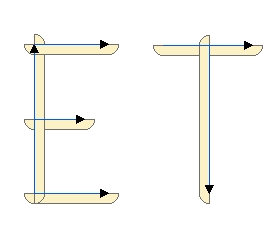
Buffer on the left side cannot be created.
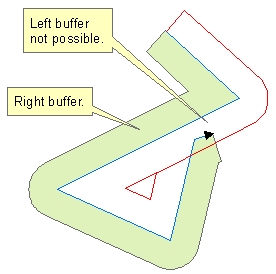
Round end will be created if a complete flat end cannot be created.
not_possible.jpg)
Parameters
| Expression | Explanation |
|---|---|
| Function Name | BufferPolylines |
| <input dataset> | A String representing the input layer. Must be of Polyline type. |
| <output dataset> | A String - the full name of the output layer. |
| <Buffer Side> | Required. A String representing the side of the polylines on which the buffers will be created. The available options are: Left, Right and Both |
| <Buffer End> | Required.Required. A String representing the shape of the buffer at the ends of the polylines. The available options are: Round - the buffer at the ends of the polyline will have a circular shape. Flat - the buffer at the end of the polyline will be closed with a straight line passing through the start/end point of the polyline |
| {Buffer Distance} | A Double representing the buffer distance in the units of the Spatial Reference of the input layer. |
| {Buffer Field} | A String representing the name of a field in the in the attribute table of the input dataset. The field has the values for the buffer distance. |
| {Dissolve Buffers} | A Boolean. If True - the boundaries of the intersecting buffers will be dissolved. |
| {Dissolve Fields} | A String representing a list (separated with ";") with the field names to be used for dissolving. |
| {Statistic Fields} | A String representing a list (separated with ";") with the field names for which statistics will be created. Example: "Field1 Sum;Field2 Max;Field3 Min" |
| {Create Multiparts} | A Boolean indicating whether the function will create multipart polygons. |
ETGWPath used in the table below is the full path to ETGWRun.exe (E.G. "C:\Program Files\ETSpatial Techniques\ETGeo Wizards\ETGWRun.exe")
| Language | Syntax |
|---|---|
| Python | subprocess.call([ETGWPath, "BufferPolylines", "input dataset", "output dataset", "Buffer Side", "Buffer End", "Buffer Distance", "", "Dissolve Buffers", "Dissolve Fields", "Statistic Fields", "Create Multiparts"]) |
| .NET using ETGWRun.exe | StartInfo.FileName = ETGWPath StartInfo.Arguments = "BufferPolylines" "input dataset" "output dataset" "Buffer Side" "Buffer End" "Buffer Distance" "" "Dissolve Buffers""Dissolve Fields""Statistic Fields""Create Multiparts" |
| .NET using ETGWOutX.dll | BufferPolylines(input dataset, output dataset, Buffer Side, Buffer End, "", Buffer Distance, "", Dissolve Buffers,Dissolve Fields,Statistic Fields,Create Multiparts) |
| ArcPy | arcpy.BufferPolylines(input dataset, output dataset, "Buffer Side" , "Buffer End", "Buffer Distance", "", "Dissolve Buffers", "Dissolve Fields" , "Statistic Fields", "Create Multiparts") |
Notes:
<> - required parameter
{} - optional parameter
The argument separator for StartInfo.Arguments is space. If a string might contain a space, you need to double quote it.